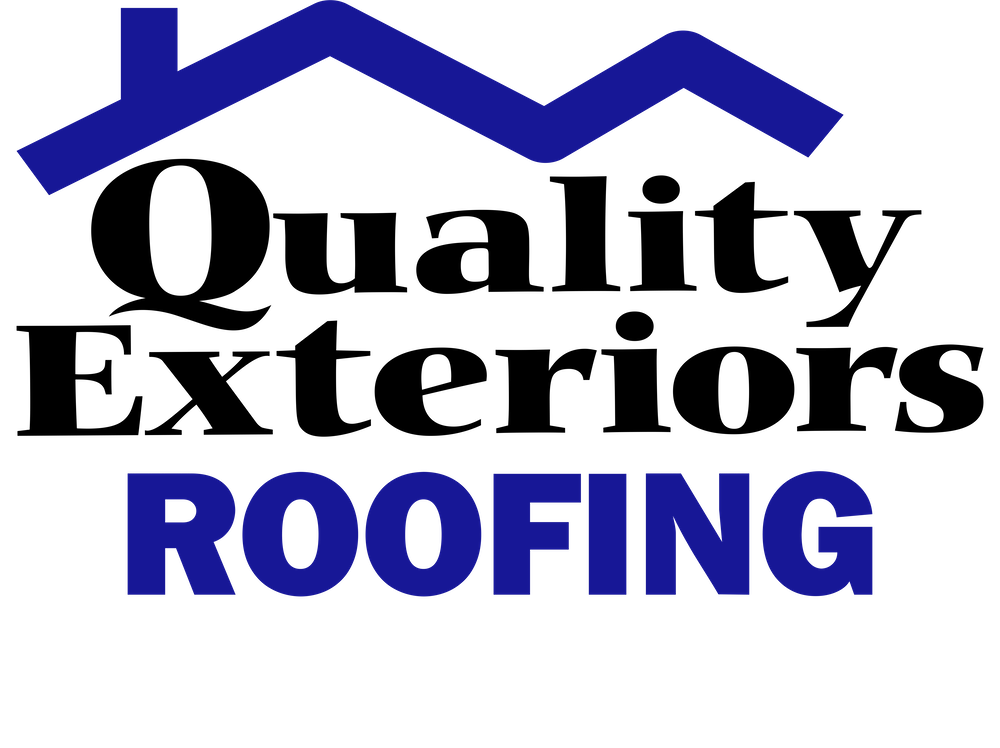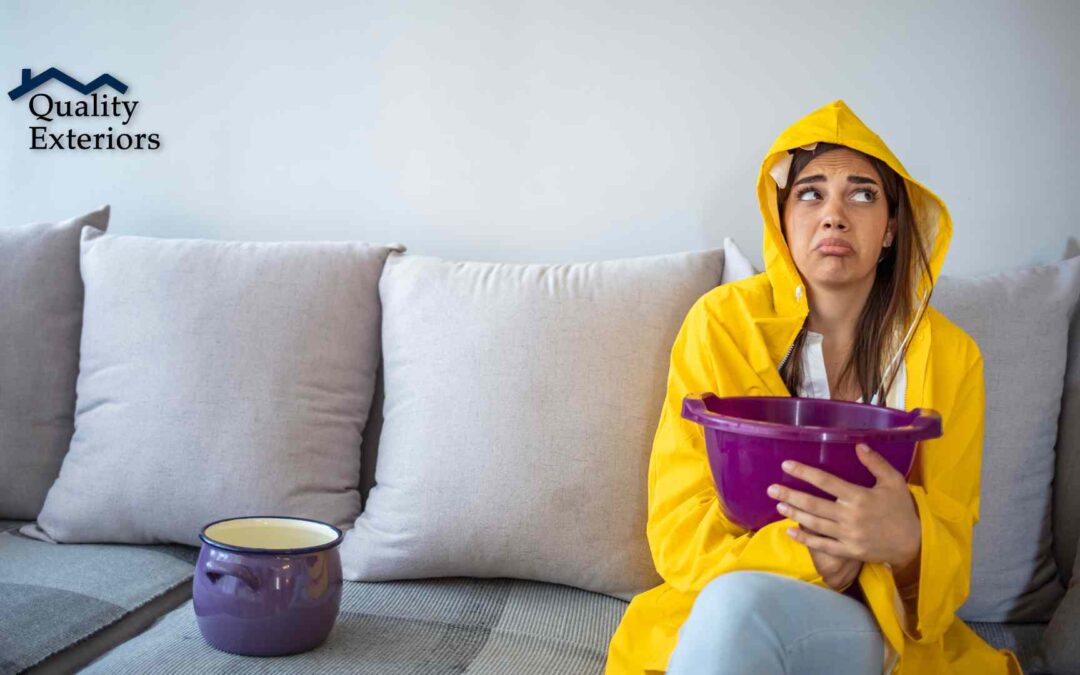At Quality Exteriors, we understand that when a roof leaks in heavy rain, this can be more than just a nuisance. When a roof leaks during heavy rain, it can lead to structural damage and compromise the integrity of your living space.
To make matters worse, the Bossier City area is typically inundated with heavy rainfall. So not only are you battling heavy rainfall outdoors, but also indoors.
The roofing professionals at Quality Exteriors will explain the causes behind leaky roofs and the signs to watch out for to avoid an emergency if your roof leaks in heavy rain.
Common Reasons Why Your Roof Leaks in Heavy Rain
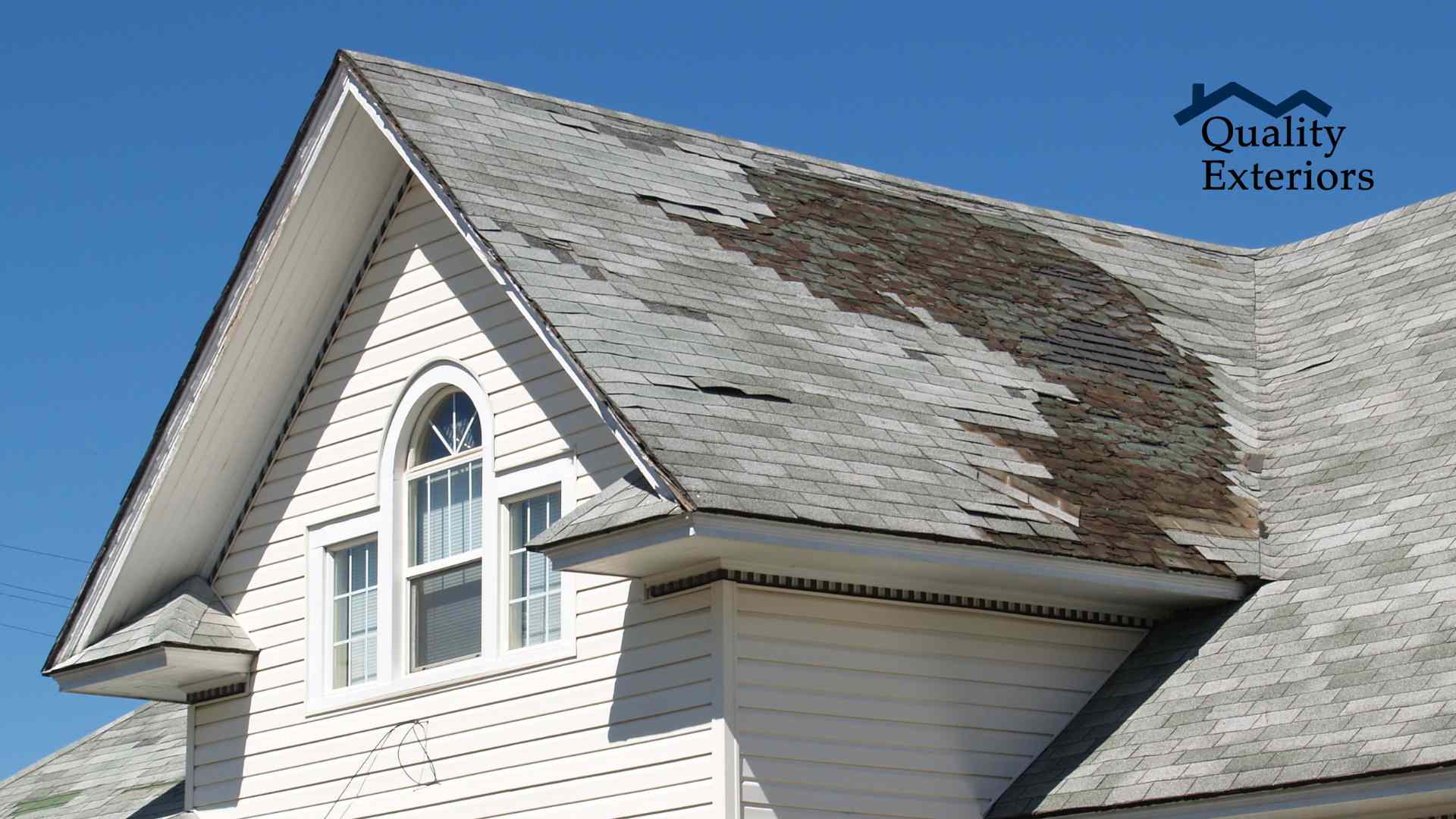
We’re often asked, “Why is my roof leaking?” Roof leaks in heavy rain can be caused by a few different reasons. Listed below are the most common reasons your roof leaks during heavy rain:
Improper Installation
Worn or Improperly Installed Roof Flashing: Over time, the cladding and flashing kit can succumb to wear, like rust, corrosion, or the elements. When these components aren’t installed properly, gaps can form around roof pipes and other areas.
In severe cases of improper installation, roof flashing has been left off the roof completely, causing a leaking roof. Always hire a reputable roofing contractor to ensure the manufacturer’s installation instructions are followed correctly.
Unsealed or Improperly Sealed Penetrations: Vents, pipe boots, and skylights must be properly sealed to prevent water from entering. The sealant or cement can degrade, shrink, or crack even if properly sealed.
Improperly Driven Roofing Nails: A lifted nail or backed-out nail may compromise the hold on shingles and underlayment, while the nail inside but driven in at an angle can fail to seal properly, leaving tiny gaps for water to seep through.
Poorly installed decking nails can also be responsible for roof leaks in heavy rain.
Constant Pooling Water: Pooling water is a significant issue for low-slope or flat roofs. This can be due to poor design, depression areas on the surface, or a lack of proper drainage.
Maintenance Issues
Damaged or Missing Shingles: Roofing materials deteriorate, crack, and lose protective granules, causing roof leaks in heavy rain.
Clogged Gutters: Clogged gutters can’t efficiently channel rainwater catches. Instead, the debris stops water, potentially causing it to seep into the eaves. When debris sits, this can cause the gutters to pull away, creating gaps where heavy rainfall can enter the home.
Seam or Sealant Failure: Over time, sealants can deteriorate. Particularly on flat roofs or around fixtures like skylights, vents, or your chimney, the sealant breakdown can allow water to penetrate.
Aging and Weather Issues
Roof Age and Prolonged Exposure to Heavy Rains: The age may be blamed if your roof leaks in heavy rain. As roofs age, materials deteriorate, making them more prone to significant damage.
Prolonged exposure to such conditions can degrade roofing components, reducing their effectiveness in waterproofing the home.
Structural Damage: One common reason your roof leaks in heavy rain is structural damage caused by a storm. The structural damage can be even worse for older roofs following heavy rainfall.
Signs of a Leaking Roof
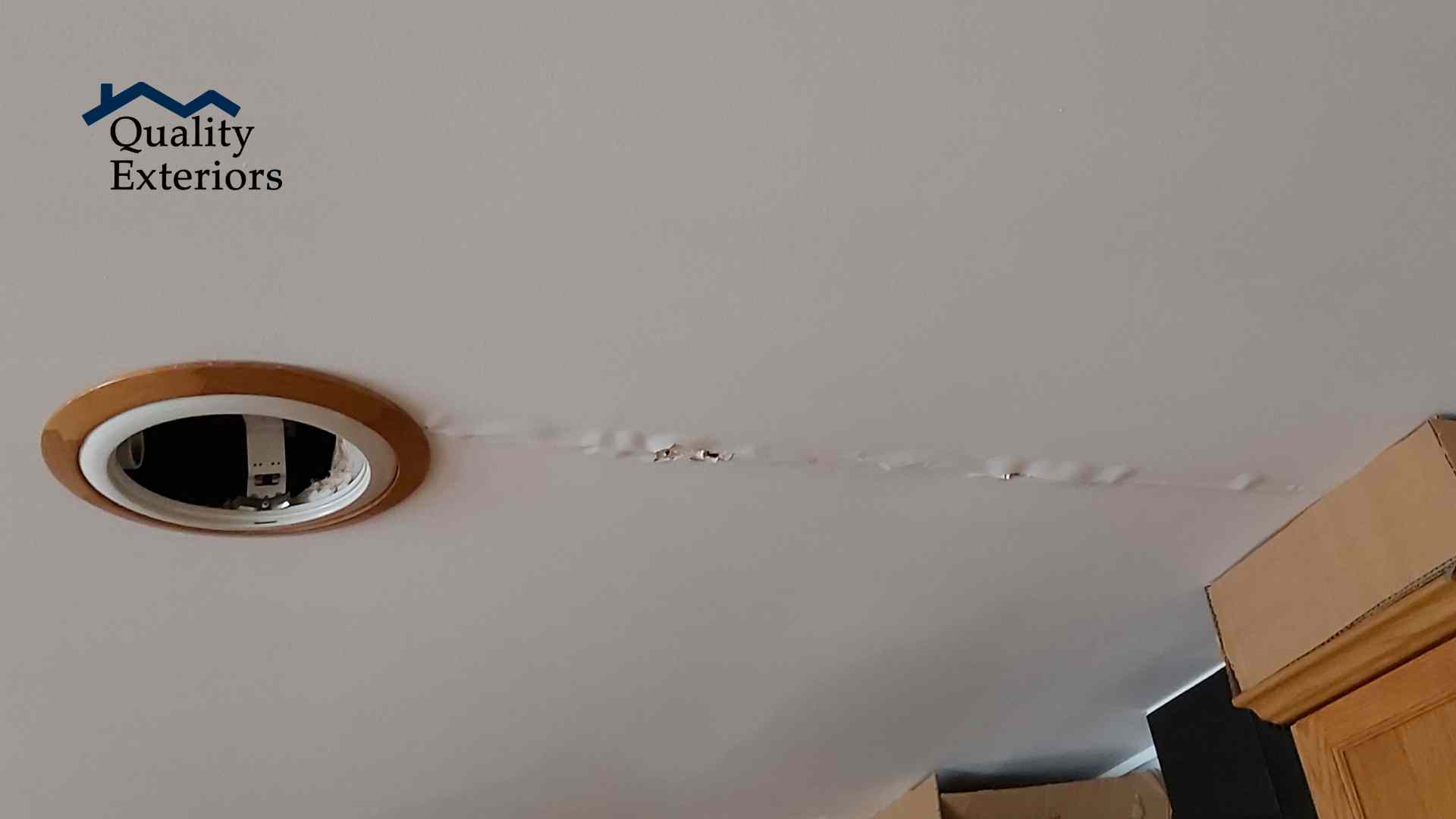
Detecting a roof leak early can be the difference between an emergency roof repair in Bossier City and roof replacement services. Things like skylight leaks, dripping sounds, and dark spots should not be ignored.
Visual Indicators of a Roof Leak
If your roof leaks in heavy rain, being attentive to the visual signs can reduce the risk of extensive water damage. Here are some signs to watch for:
Shingle Condition: Buckling, cracking, curling, or missing shingles are a clear invitation for water intrusion.
Roof Flashing and Sealants: Flashing surrounding roofing components should form an unbroken barrier.
Roof Valleys Debris: Roof valleys debris builds up over time. This will stop water and debris from flowing off the roof.
Gutters and Downspouts: If overflowing or damaged, they could contribute to water backing up and seeping under the roof covering.
Dark Spots: Often brown or yellowish, these marks are classic signs of water damage.
Odor and Mold: Mold or mildew growth shouldn’t be ignored, particularly in corners where the ceiling meets the walls.
Peeling Paint or Wallpaper: Water seeping in can undermine the adhesion of paint and wallpaper.
How to Pinpoint the Source of a Roof Leak
If your roof leaks during heavy rain, try these steps when looking for the source of the roof leak:
Interior Inspection: Examine your attic or the highest point in your home for water damage, mold, or discoloration signs.
Check the Roof Exterior: Inspect for damaged, missing, or aged shingles, compromised flashing, sealant failure, and chimney leaks. Inspect any plumbing pipe, as the pipe boot may have become damaged, creating a gap.
Look for Debris and Blockages: Debris stops water from draining. So, look for piles of leaves, twigs, or popped-up nails that could prevent water and debris from flowing freely off the roof.
Trace the Water Path: Water typically follows the path of least resistance, often along roof rafters or the underside of the decking. Trace any watermarks or trails to their highest point to find where the water might enter.
Inspect Roofing Accessories: Ensure all roofing accessories are sealed and installed properly. Look around satellite dishes, solar panels, or other installations penetrating the roof.
How to Prevent Future Leaks
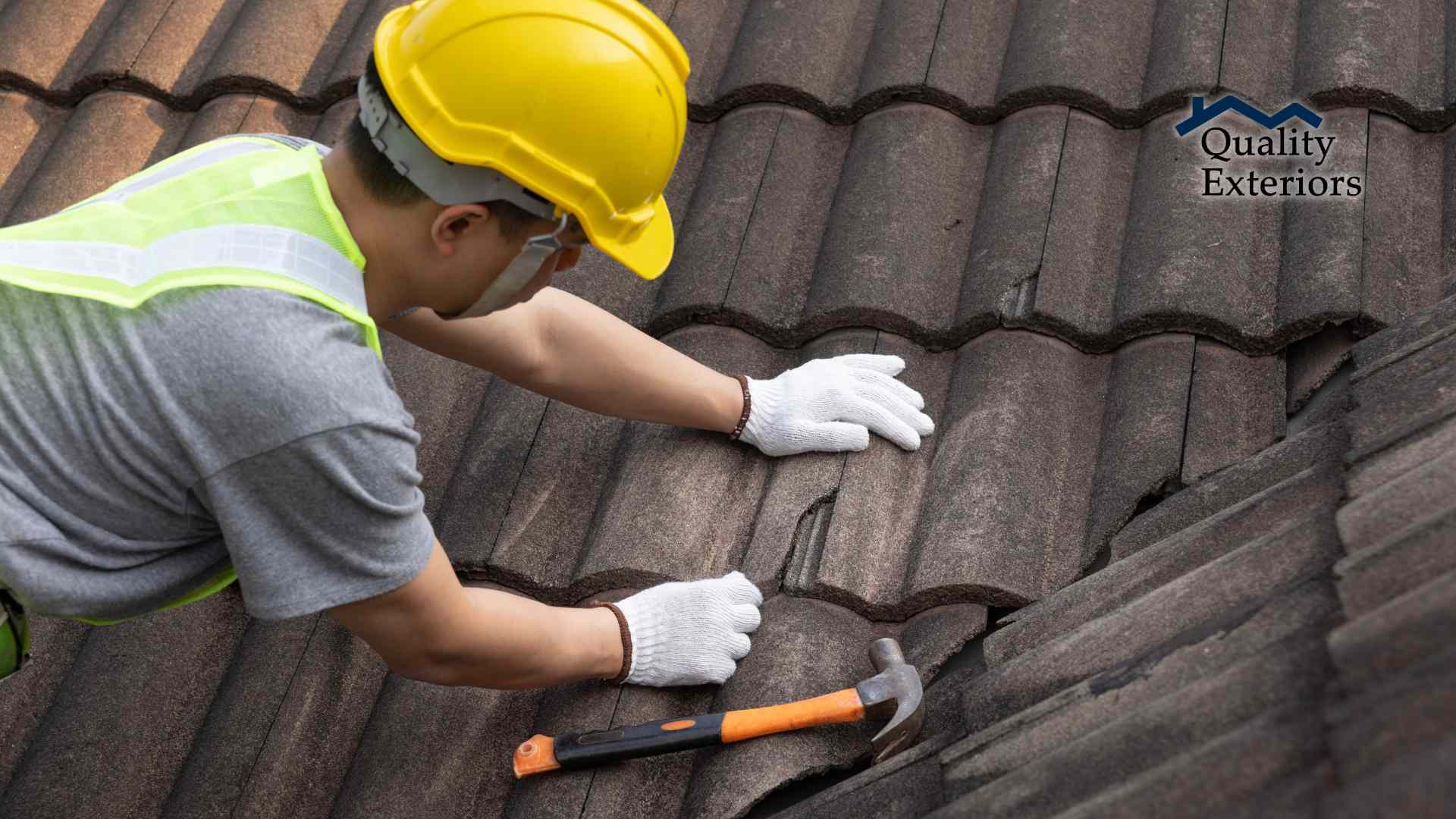
Preventing roof leaks in heavy rain can be an ongoing battle. Preventing a roof leak isn’t just about a quick fix for an immediate leak.
Quality Exteriors can help you maintain the integrity of your roof, extend its lifespan, and keep your sanctuary dry.
Essential Roof Maintenance Tips
Here are essential roof maintenance tips that homeowners should consider to prevent roof leaks in heavy rain:
Regular Inspections: Schedule bi-annual Bossier City roof inspections, preferably in the spring and fall, to check for signs of damage or wear.
Clean Your Gutters: Remember to clean your gutters at least twice yearly for proper drainage.
Remove Debris: Remove debris from your rooftop.
Trim Overhanging Branches: Keep trees trimmed to reduce the chances of branches falling on the roof during heavy rainfall.
Check for Rust: If you have a metal roof, check for rust. If it’s present, use a wire brush to remove the rust, then prime and paint the metal.
Choosing the Right Materials to Combat Leaking Roof Issues
Here’s what to consider when choosing materials designed to combat leaking roof issues, especially in Bossier City:
Local Climate: Choose materials known for their longevity and ability to withstand the local climate’s particular stresses.
Shingles: Invest in high-quality shingles that balance flexibility and toughness.
Underlayment Materials: The underlayment is a secondary barrier against water intrusion. Synthetic underlayments, for instance, provide superior tear resistance and longevity compared to traditional felt options.
Flashing and Edging Metal: Choose corrosion-resistant flashing and edging materials, such as copper or galvanized steel flashing materials, which can endure for decades.
Water-Resistant Barrier Products: Consider adding a water-resistant barrier on the underlayment for extra protection, especially in roof valleys and around penetrations where water tends to collect or flow.
High-Quality Sealants: Use top-grade sealants that can expand and contract with temperature changes without cracking or losing adhesion.
Roof Decking: Choose decking materials that provide a strong base and resist water absorption.
Ventilation Components: Proper ventilation helps to keep the attic dry and prevents the buildup of moisture, which can compromise roofing materials over time. Make sure your roof includes well-designed vents and soffits.
Free Roof Inspection for Shreveport and Bossier City Home and Business Owners
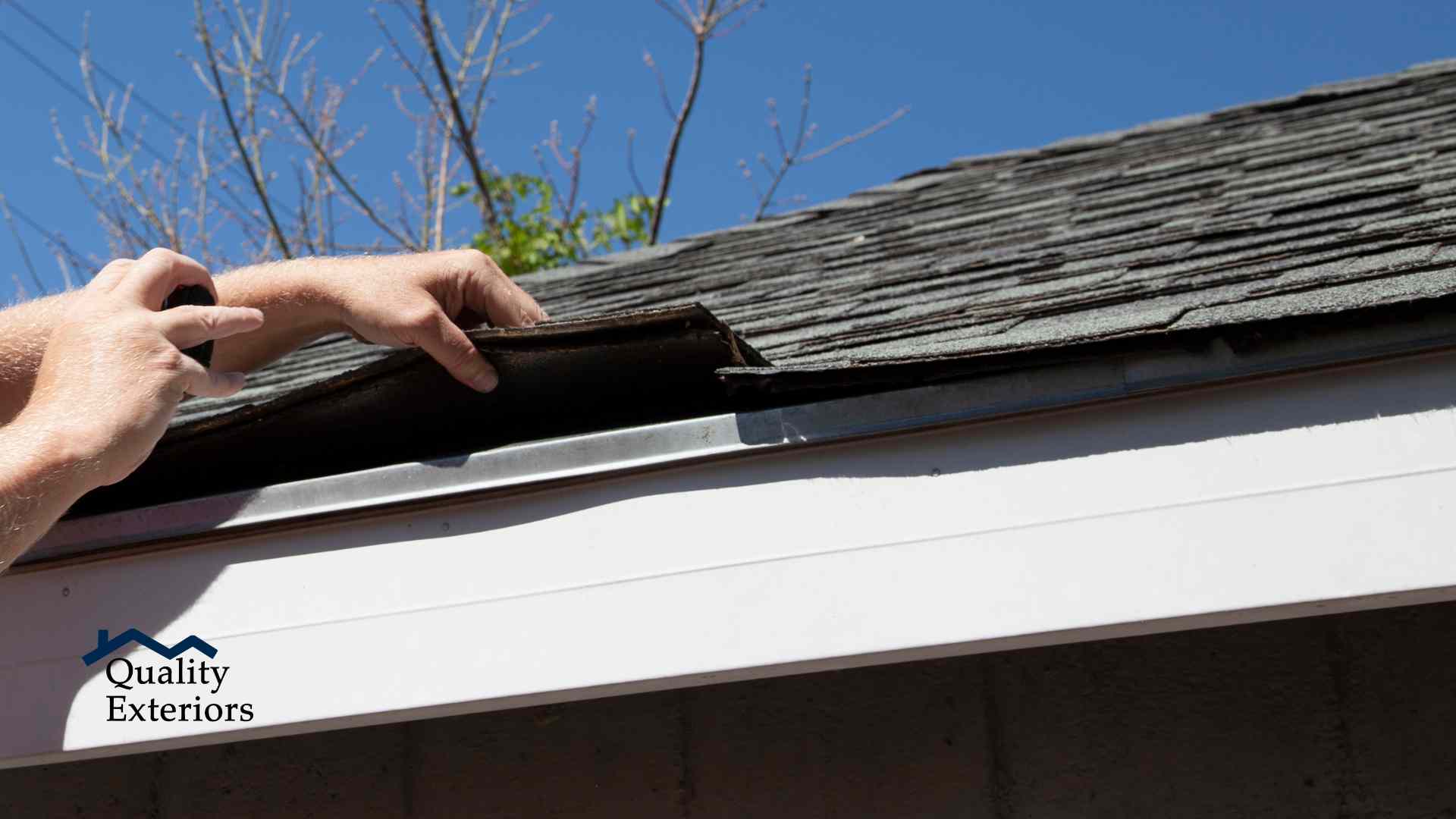
If you wish to prevent roof leaks in heavy rain, schedule a free roof inspection with Quality Exteriors!
Whether you’re a business owner or homeowner, you can count on a professional roofing contractor to perform a detailed assessment of your entire roofing system, including shingles, flashing, gutters, pipe boots, mortar joints, downspouts, ventilation structures, and even your chimney and skylight areas!
We’ll ensure everything is properly insulated and that no rain stops on your roof for prolonged periods.
Post-evaluation, you’ll receive professional advice and a no-obligation quote should we need to fix a component to prevent further damage.
Quality Exteriors: Your Trusted Shreveport and Bossier City Roofing Contractor
If you need help choosing a roofing contractor in Bossier City, let Quality Exteriors be your go-to roofing contractor. We provide unparalleled expertise, quality products, and a personal touch, ensuring your roof is in top condition.
To schedule a free roofing inspection in Shreveport or Bossier City, call Quality Exteriors at 318-747-1254 or complete our online form.
